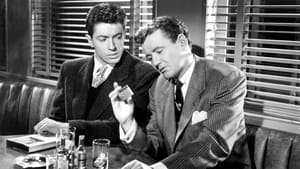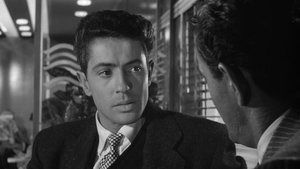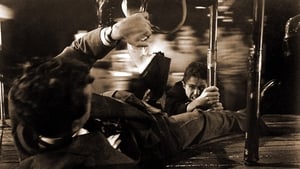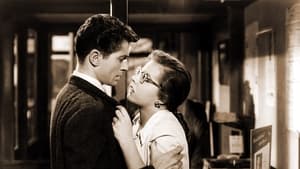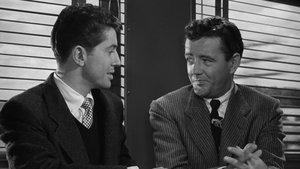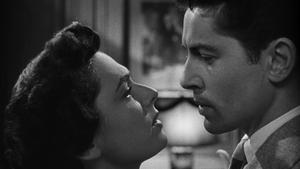Contact: [email protected]
Video Sources 0 Views
- Watch trailer
- Strangers on a Train


Synopsis
Table of Contents
ToggleReview: Strangers on a Train (1951) – Hitchcock’s Masterpiece of Suspense

Introduction
Strangers on a Train, released in 1951, is a classic psychological thriller directed by the legendary Alfred Hitchcock. Known for its gripping storyline, masterful direction, and iconic suspense sequences, the film has earned its place as one of Hitchcock’s most acclaimed works. In this review, we’ll explore the timeless appeal of Strangers on a Train and its enduring legacy in the realm of cinematic thrillers.
Check The Full Colorized Movies List
Check Our Colorized Movies Trailer Channel
Understanding Strangers on a Train (1951): Director, Cast, and Genre
Directed by Alfred Hitchcock, Strangers on a Train features an ensemble cast led by Farley Granger as Guy Haines and Robert Walker as Bruno Anthony. The film falls within the genre of psychological thriller, known for its exploration of suspenseful themes and complex character dynamics.
Exploring the World of Strangers on a Train (1951): Plot and Characters
Strangers on a Train follows the story of Guy Haines, a professional tennis player, who meets the charming and enigmatic Bruno Anthony on a train journey. In a seemingly innocent conversation, Bruno suggests a twisted plan to exchange murders – each committing the crime the other desires. When Bruno carries out his part of the bargain, Guy finds himself trapped in a deadly game of cat and mouse, forced to confront his darkest fears and unravel the truth behind Bruno’s sinister intentions.
The Art of Film Colorization
While Strangers on a Train was originally filmed in black and white, its early colorized version adds a new layer of visual richness and depth to its atmospheric portrayal of suspense and intrigue. The colorization process enhances the film’s visual appeal and captures the tension-filled atmosphere of its thrilling narrative with stunning clarity.
Early Colored Films: A Brief History
The history of early colored films is marked by innovation and experimentation as filmmakers sought to enhance the visual appeal of their movies. From hand-tinted frames to pioneering technicolor processes, the evolution of colorization techniques transformed the cinematic landscape, offering audiences a new way to experience classic stories and immersive settings.
Strangers on a Train (1951) and Its Early Colored Version
The decision to release Strangers on a Train in a colorized format was made with the intention of immersing audiences in the tense and atmospheric world of Hitchcock’s suspenseful thriller. While some purists may prefer the original black and white version, the early colorized edition of the film adds a new dimension to its storytelling and captures the chilling atmosphere of its narrative with stunning visual clarity.
The Debate Over Film Colorization
The debate over film colorization continues to divide audiences and industry professionals alike. While some argue that colorization breathes new life into classic films and makes them more accessible to modern audiences, others maintain that it compromises the artistic integrity of the original work. As technology advances and filmmaking techniques evolve, the debate over colorization remains a topic of ongoing discussion within the film community.
Examining Strangers on a Train (1951) as an Early Colored Film
Viewing Strangers on a Train in its early colorized iteration offers audiences a fresh perspective on its atmospheric portrayal of suspense and intrigue. The colorization process enhances the film’s visual appeal and captures the tension-filled atmosphere of its thrilling narrative with stunning clarity. As Guy Haines and Bruno Anthony engage in a deadly game of cat and mouse, the audience is drawn into a world of psychological suspense and moral ambiguity that resonates with timeless relevance.
Influence and Legacy: Strangers on a Train (1951)’s Impact on Cinema
Strangers on a Train is widely regarded as a masterpiece of suspense that continues to captivate audiences with its gripping storyline, masterful direction, and iconic suspense sequences. Its enduring legacy has inspired generations of filmmakers and influenced the portrayal of psychological thrillers in cinema. As a testament to its timeless appeal, Strangers on a Train remains a benchmark for cinematic excellence and a cornerstone of Alfred Hitchcock’s illustrious career.
Director’s Cinematic Legacy: Beyond Strangers on a Train (1951)
Alfred Hitchcock’s directorial legacy extends far beyond Strangers on a Train, encompassing a diverse body of work that includes classics such as Psycho, Vertigo, and North by Northwest. As a filmmaker, Hitchcock was known for his unparalleled ability to thrill and entertain audiences with his innovative storytelling techniques, suspenseful narratives, and memorable characters. Strangers on a Train stands as a testament to his talent and creativity, solidifying his reputation as one of the greatest directors in the history of cinema.
Themes Explored in Strangers on a Train (1951)
At its core, Strangers on a Train explores themes of obsession, guilt, and moral ambiguity. Through its complex characters and suspenseful narrative, the film delves into the darker aspects of human nature and the consequences of unchecked desires. As Guy Haines grapples with the consequences of Bruno Anthony’s sinister plot, he is forced to confront his own inner demons and wrestle with the moral implications of his actions.
Reception and Controversy Surrounding Strangers on a Train (1951)
Upon its release, Strangers on a Train received widespread critical acclaim for its gripping storyline, masterful direction, and iconic suspense sequences. However, the decision to release the film in a colorized format sparked debate among fans and critics alike. While some praised the colorization process for enhancing the film’s visual appeal, others questioned its necessity and expressed concern about preserving the integrity of Hitchcock’s original vision.
Where to Watch Strangers on a Train (1951) Online
For those eager to experience Strangers on a Train for themselves, the film is readily available on popular streaming platforms such as Amazon Prime Video, Google Play Movies, and iTunes. Whether viewed in its original black and white format or its early colorized iteration, Strangers on a Train offers a thrilling and suspenseful cinematic experience that is sure to keep audiences on the edge of their seats.
FAQs About Strangers on a Train (1951)
1. Is Strangers on a Train based on a true story?
No, Strangers on a Train is a fictionalized psychological thriller adapted from the novel of the same name by Patricia Highsmith. While the characters and storyline are works of fiction, the film’s exploration of obsession, guilt, and moral ambiguity draws inspiration from real-life events and universal human experiences.
2. Who starred in Strangers on a Train?
Strangers on a Train stars Farley Granger as Guy Haines, the professional tennis player drawn into a deadly game of cat and mouse with Robert Walker’s charismatic and enigmatic Bruno Anthony. Their compelling performances bring depth and authenticity to their respective roles, elevating the tension-filled atmosphere of the film’s narrative.
3. What is the central message of Strangers on a Train?
At its core, Strangers on a Train delivers a chilling message about the consequences of unchecked desires and the thin line between sanity and madness. Through its complex characters and suspenseful narrative, the film explores the darker aspects of human nature and the moral implications of obsession, guilt, and betrayal.
4. Why was Strangers on a Train released in a colorized format?
The decision to release Strangers on a Train in a colorized format was made with the intention of immersing audiences in the tense and atmospheric world of Hitchcock’s suspenseful thriller. While some purists may prefer the original black and white version, the early colorized edition of the film adds a new dimension to its storytelling and captures the chilling atmosphere of its narrative with stunning visual clarity.
5. What is the legacy of Strangers on a Train?
Strangers on a Train is widely regarded as a masterpiece of suspense that continues to captivate audiences with its gripping storyline, masterful direction, and iconic suspense sequences. Its enduring legacy has inspired generations of filmmakers and influenced the portrayal of psychological thrillers in cinema. As a testament to its timeless appeal, Strangers on a Train remains a benchmark for cinematic excellence and a cornerstone of Alfred Hitchcock’s illustrious career.
6. Are there any sequels or remakes of Strangers on a Train?
While there have been no official sequels or remakes of Strangers on a Train, the film’s iconic status has inspired countless adaptations and reinterpretations in various media. However, none have achieved the same level of critical acclaim or cultural significance as the original 1951 film.
7. Where can I watch Strangers on a Train online?
For those eager to experience Strangers on a Train for themselves, the film is readily available on popular streaming platforms such as Amazon Prime Video, Google Play Movies, and iTunes. Whether viewed in its original black and white format or its early colorized iteration, Strangers on a Train offers a thrilling and suspenseful cinematic experience that is sure to keep audiences on the edge of their seats.
Conclusion
In conclusion, Strangers on a Train (1951) stands as a timeless masterpiece of suspense that continues to captivate audiences with its gripping storyline, masterful direction, and iconic suspense sequences. Whether viewed in its original black and white format or its early colorized iteration, Alfred Hitchcock’s compelling exploration of obsession, guilt, and moral ambiguity offers a thrilling cinematic experience that is sure to keep audiences on the edge of their seats. As Guy Haines and Bruno Anthony engage in a deadly game of cat and mouse, viewers are drawn into a world of psychological suspense and moral complexity that resonates with timeless relevance. With its enduring legacy and profound insights into the darker aspects of human nature, Strangers on a Train remains a benchmark for cinematic excellence and a testament to Hitchcock’s unparalleled talent as a master storyteller.
